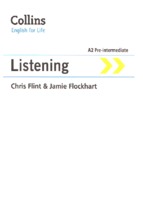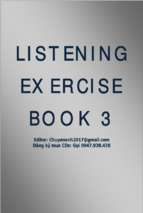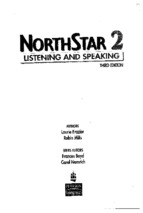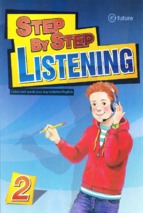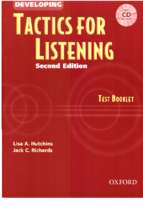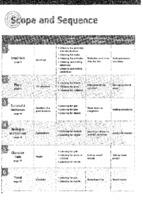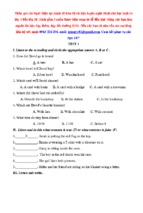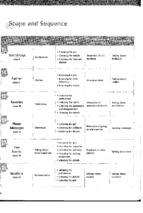102 Things You
Need to Know
Before You File
Bankruptcy
Written and Published by
Victoria Ring, Bankruptcy Paralegal
Columbus, Ohio USA
email:
[email protected]
website: http://www.victoriaring.com/bankruptcy/
An Important Message to the Readers:
This free ebook provides information and general advice about the law from the knowledge and
viewpoint of a bankruptcy paralegal. However, laws and procedures change frequently, and
they can be interpreted differently by different people. For specific advice geared to your particular financial situation, consult an expert. No book, software, or other published material is a
substitute for personalized advice from a knowledgeable attorney licensed to practice law in
your state.
Copyright © January 2001 by Victoria Ring. ALL RIGHTS RESERVED. No part of this publication may be reproduced, stored in a retrieval system, or transmitted in any form or by any
means, electronic, mechanical, photocopying, recording or otherwise for sale or profit, without
prior written permission of Victoria Ring. Printing of this publication from the internet download
version is permitted for private viewing only.
TABLE OF CONTENTS
Page
Bankruptcy To Go Kit ...........................................................................................................................
a
Overview ..............................................................................................................................................
a
Free Forms Included ............................................................................................................................
b
Paid Services .......................................................................................................................................
b
Guidelines ............................................................................................................................................
1
How Filing Bankruptcy Can Help You ..................................................................................................
1
Terms You Need to Know Concerning Bankruptcy ..............................................................................
2
Chapter 7 Bankruptcy ..........................................................................................................................
3
Steps That Occur in Filing a Chapter 7 Bankruptcy .............................................................................
4
Chapter 13 Bankruptcy ........................................................................................................................
5
Steps That Occur in Filing a Chapter 13 Bankruptcy ...........................................................................
5
Changes in Payments During a Chapter 13 Bankruptcy ......................................................................
7
Chapter 11 Bankruptcy ........................................................................................................................
7
Rules that Apply to All Forms of Bankruptcy ........................................................................................
7
Debts That Cannot be Discharged .......................................................................................................
8
The First Steps to Filing a Bankruptcy Petition ....................................................................................
8
How Your Credit Will be Effected by Bankruptcy ................................................................................. 10
Other General Questions and Answers ................................................................................................ 10
Websites to Help you Learn More About Bankruptcy ........................................................................... 13
Information-Gathering Forms for the preparation of Your Bankruptcy Petition .................................... 14
General Information .................................................................................................................
1
Debt Sheet ..............................................................................................................................
2
Income History ........................................................................................................................
3
Monthly Budget .......................................................................................................................
4
Asset Checklist ........................................................................................................................
5
Duty to Disclose All Assets ...................................................................................................... 13
Duty to Disclose All Creditors .................................................................................................. 14
Agreement ...............................................................................................................................
15
Additional Documents Needed to File Petition ........................................................................ 16
102 Things You Need to Know
Before Filing Bankruptcy
Bankruptcy To Go Kit
This file that you recently downloaded
from the internet is a complete ebook
dedicated to helping the following types
of people:
(a) Consumers -- people who are
interested in learning more about
bankruptcy and/or interested in filing
their own bankruptcy and saving $100’s
of dollars in attorney fees.
(b) Paralegals -- legal professionals
with an attorney/boss who is considering offering bankruptcy services to
clients.
(c) Attorneys -- legal professionals
who do not normally offer bankruptcy
services to clients, but are interested in
starting. The forms included in this
“Bankruptcy To Go Kit” can be printed
and used in the office as master forms.
Overview
Thank you for downloading this free
book from the website located at http://
www.victoriaring.com/bankruptcy/
book01.doc. This book is written by a
Victoria Ring, a bankruptcy paralegal,
who is well aware of the confusion and
multitude of questions that surround the
subject of bankruptcy. Her experience
of working with 100’s of clients filing
bankruptcy in the Columbus, Ohio area
has awarded her the ability to know
what consumers really think and want
to know about this subject as well as all
the steps they need to take in order to
file.
For instance, Matt down the street comes
by one day to tell you how he filed bankruptcy last week and purchased a new car
this week. However, your brother
Marshall filed bankruptcy last year and his
credit has been ruined ever since.
Marshall can’t even get a check-cashing
card at his bank. What happened? What
did Matt do that Marshall didn’t? Will the
same thing happen to you?
And what about when Debbie filed bankruptcy because her husband died and the
household income was reduced? When
she filed bankruptcy they came and took
her home away! Of course there is no way
you would want that to happen to you.
You don’t want to lose your home, car and
furniture just because you decide to file
bankruptcy.
Stories like these are certainly not unique.
All of these same fears surround almost
everyone when they are thinking about
filing bankruptcy for the first time. Fear of
the unknown is a natural reaction for
human beings. However, this is precisely
the reason why this book was written. It is
written to take the fear out of filing bankruptcy, but most importantly, it will educate
you so you can make a more informed
decision about whether filing bankruptcy is
in your best interest or not.
Filing bankruptcy is not necessarily for
everybody, as you will soon see; and after
reading this ebook, you will be in a better
position to make an educated decision
about your present financial condition. If
you decide to go ahead with the process
of filing bankruptcy, at least you will know
what to expect after reading this ebook.
Free Forms Included
Beginning on Page 14 of this ebook, a
variety of forms are provided for you to
print out, fill out and mail in at your
convenience if you decide you want to
file your own bankruptcy. Or, if you are
an attorney, you can print out the
forms, remove my name from them
and use them for your own office.
I personally designed these forms for
the two bankruptcy attorney’s that I
was employed with. At the time I hired
at the law firm, they were still using old
1960’s style forms. Because the
bankruptcy laws had changed so
dramatically, when we did intake
interviews with clients, we had to write
additional information on the side,
bottom and back of the old 1960’s
forms to have enough information to
prepare the bankruptcy petition.
After several months of using these
old, outdated forms I figured out the
best way to update them. I sat down
one day and re-designed the forms to
include virtually every piece of information needed for the paralegal to prepare a well-presented bankruptcy
petition to the Bankruptcy Court.
However, the forms were not perfect
the first time out. We had to put them
through actual office use and work the
“bugs out” before they were perfect.
So be assured, the forms included in
this Bankruptcy-To-Go Ebook Package
have been previously tested by a law
firm that does nothing but specialize in
filing bankruptcy petitions.
Paid Services
If, after reading this ebook, you should
contemplate filing bankruptcy, print out
the forms and start filling them out.
Even if you decide not to file bank-
ruptcy right now, you will have pertinent
and important information gathered to help
you access your financial situation. Also, if
you should hire an attorney to file your
bankruptcy petition, the forms will already
be ready to hand to the attorney. He/She
will greatly appreciate your preparedness
and it will be quicker to process your
bankruptcy petition.
However, if you want to save $100’s in
attorney fees, I can personally prepare you
a Chapter 7 or Chapter 13 bankruptcy and
submit it as a “non-attorney preparer.” (It
is legal in all 50 states to file your own
bankruptcy with or without an attorney.) I
will prepare your petition for $89.95 and
send it back to you through the mail. You
then take the papers and file them in court,
attend your 5-10 minute 341 Hearing in
about 6 weeks and confirmation hearing
which takes 2-3 minutes. It’s a simple
process, which I will walk you through if
you decide to us my services.
But ... let’s read on to discover those 102
things you need to know before filing
bankruptcy. That’s why you downloaded
this ebook for in the first place, right?
My best to you,
Victoria Ring
Victoria Ring
Bankruptcy Paralegal
“102 Things You Need to Know Before You File Bankruptcy”
Page 1
Guidelines
If you are considering filing for bankruptcy, you are not alone. Many people
have and will continue to file for bankruptcy based upon the times with
corporate layoffs, downsizing and
continuing business failures. Although
not inclusive, the general guidelines
below will help you determine if you
should consider filing bankruptcy.
1.
You should file for bankruptcy
when you cannot reasonably pay your
bills.
2.
If your income does not sufficiently pay off or pay down your bills,
it’s time to consider bankruptcy.
3.
If your monthly debt is 1.5 times
your monthly income. For example, if
you have a monthly net income of
$2,800 but your monthly expenses are
about $4,200, it’s time to think about
bankruptcy.
4.
If you cannot budget yourself out
of the debt within four years, it’s time to
seriously consider bankruptcy.
5.
If you are more than two months
late on your bills, bankruptcy may be a
consideration.
6.
If your loan or mortgage has been
“called” or accelerated, it’s time to
seriously consider bankruptcy.
7.
If you get a foreclosure notice
from the bank or a lender; it’s time to
seriously consider bankruptcy.
8.
If you have withdrawn from your
savings account for two months; bankruptcy may be a consideration.
9.
If you are depressed about your
financial situation, it may be time to consider bankruptcy.
10. If you have a severe financial setback such as the loss of a job, major
surgery without medical insurance, etc., it’s
time to seriously consider bankruptcy.
Generally, people filing for bankruptcy are
dealing with the following situations:
• Loss of their job or their primary
means of support;
• Been laid off from their job;
• Been demoted or given a significant
pay cut;
• Experienced major family problems
leading to divorce, child custody or separation;
• Excessive major credit card problems;
• Catastrophic medical-doctor bills
from an uninsured major surgery or illness
such as terminal cancer;
• Desperate financial situations with
little hope.
How Filing Bankruptcy Can Help You
11. Filing bankruptcy is as simple as
taking a set of papers down to the Bankruptcy court, standing in line at the Clerk of
Court, paying a filing fee and having the
papers date/time stamped and handed
back to you. (The court keeps the original.) A Judge will also be assigned at this
time. This simple process takes about 10
“102 Things You Need to Know Before You File Bankruptcy”
Page 2
minutes to complete. This set of
papers that you filed with the court is
called a “bankruptcy petition.” The
moment the Clerk of Court stamps
your bankruptcy petition, the following
good things can happen to you:
20. Secured Debt — This is a debt you
owe for an item that could be taken away
from you if you don’t pay the bill. For
instance, if you don’t make your house
payment, the creditor (or bank) you owe
can repossess your house.
12. Anybody you owe cannot contact
you in any way (once they receive
notice in the mail from the court.)
21. Unsecured Debt — This is a debt
you owe for something that cannot be
taken from you. For instance, anything you
charge on a credit card is an “unsecured
debt.” If you don’t pay the MasterCard bill
this month, they cannot come and take
whatever you bought with the credit card.
All they can do is harass you on the telephone until you pay the bill, turn the bill
over to a collection agency, or attempt to
get a judgement against you (depending
on the amount you owe them.)
13. Any wage garnishments taken
out of your check will cease to be
lawful. If the garnishment is taken out
of your check after you file bankruptcy
you may be entitled to a refund.
14. Any foreclosure action on your
home or other real property is stopped.
15. Any Sheriff’s sales are stopped
immediately.
16. Any taxes you owe that are
currently being collected on by the
government are put on hold (while your
debts are being reorganized.)
17. Anybody coming to repossess your
auto, boat, furniture, appliances, or anything else are stopped immediately and
cannot remove anything without the
Bankruptcy Court’s permission.
Terms You Need to Know
Concerning Bankruptcy
18. Creditor — This is the person or
company you owe money to because
they extended credit to you.
19. Debtor — This is YOU. You owe
debts, so you are a debtor.
22. Asset — This is something you own
that has resale value. Your car, TV set,
computer, stocks, bonds, bank accounts,
piggy bank, clothes, bed, etc. are all things
that have some type of value that could be
turned into cash. These types of things
are your assets.
23. Discharge — This is what happens
when your debts are erased and you have
completed your bankruptcy.
24. Exemption — There are exemption
allowances allowed by the Bankruptcy
Court to protect the assets you own that
you need to keep in order to live a normal
life. For instance, you need a house to live
in, a car to drive, transportation to maintain
the car, clothes to wear, medicine refills,
personal care items, etc. The law allows
you to keep these types of items by allowing you exemptions on them. When
anything you own is totally exempt from
“102 Things You Need to Know Before You File Bankruptcy”
Page 3
the bankruptcy, no one can take it
away from you.
25. Automatic Stay — The moment
a bankruptcy is filed, all creditor activity
to collect debts, obtain judgments, or
obtain property of a debtor to satisfy a
debt is completed stopped. This is the
protection provided to you as a consumer under the Bankruptcy law in the
United States.
26. Relief From Stay — This is a
court order, requested by a creditor,
who asks the court to lift the Automatic
Stay that was immediately put in place
when the debtor filed the bankruptcy
petition. If a creditor is granted a Relief
from Stay, the debtor will receive notice
from the court of its existence and the
bankruptcy attorney can prepare a
Motion on the debtor’s behalf to request the court to remove the Relief
from Stay. (Of course, there must be a
lawful reason to do so.)
27. Reaffirmation Agreement —
This is what you file with the court if
you decide to pay a creditor outside
your bankruptcy. For example, you
may want to reaffirm with Bob’s Auto
Sales when you file your Chapter 7
bankruptcy petition, because you want
to keep making payments on your car
since you need it to get back and forth
from work.
28. Trustee — This is a real “live”
person that works for the Bankruptcy
Court who normally oversees the entire
process from beginning to end concerning your bankruptcy.
29. Conversion — This is when you
start out by filing one chapter of bankruptcy and decide later to file another
chapter. For example, you originally file a
Chapter 7 but decide to convert to a
Chapter 13.
30. Dismissal — Among other things,
your bankruptcy case can be dismissed at
any time if you fail to comply to any rules,
don’t turn over asset monies that are
requested by the Trustee or if you convert
from one Chapter of bankruptcy to another. Your case is “discharged” if you
completely pay off your Chapter 13 or
when your Chapter 7 is legally finished.
Chapter 7 Bankruptcy
31. In order to be eligible to file a Chapter 7 bankruptcy, you must be able to meet
these guidelines:
• You must reside or have a domicile, a place of business, or property in the
United States.
• You must not have received a
bankruptcy discharge within the last six (6)
years or have had a bankruptcy case
dismissed within the last 180 days.
32. People who file a Chapter 7 bankruptcy do so in order to discharge their
debts and get a “fresh start” in life. There
are no income requirements to file a
Chapter 7 and people who file this type of
bankruptcy are those who can no longer
afford to repay all their debts due to illness,
unemployment, marital problems, unexpected medical expenses, over-extended
credit or other large expenses. However,
not all debts can be discharged. For
“102 Things You Need to Know Before You File Bankruptcy”
Page 4
example, alimony, student loans, child
support and taxes that are less than 3
years old are non-dischargable and
must be repaid in full.
33. Most consumers file a Chapter 7
bankruptcy and then reaffirm on the
debts they want to continue paying. For
instance, you can file a Chapter 7 and
reaffirm on your house. This could
possibly erase your other debts and
you would continue making your house
payments like you normally do now,
outside the bankruptcy.
(Note: There is pending legislation
currently being debated in Washington
D.C. to change this law, making it
harder for people to file a Chapter 7
and forcing them to file a Chapter 13,
but the law has not been enacted as of
the date this ebook is written.)
Steps That Occur in Filing a
Chapter 7 Bankruptcy
34. In order to be eligible to file a
Chapter 13 bankruptcy, you must be
able to meet these guidelines:
• Have a steady source of income so that you can make regular
payments to the Trustee.
• The total amount of your debts
cannot exceed $750,000.00 and
unsecured debts cannot be more than
$250,000.00.
35. When your bankruptcy petition is
prepared and signed by you, it is filed
with the Bankruptcy Court. You are
assigned a case number and a Trustee
or “interim” Trustee. An interim
Trustee is the person who is responsible
for overseeing your bankruptcy until the
Meeting of Creditors, at which time you will
be appointed a new Trustee or the interim
Trustee will be assigned to your case.
36. If you plan to reaffirm on a debt
(which means you want to continue paying
the bill on your own after the bankruptcy is
over), your attorney or paralegal needs to
submit a Reaffirmation Agreement to the
creditor, obtain their signature and file this
with the court. However, you can still pay
the bill on your own without filing a Reaffirmation Agreement; but it is best to file one
if the creditor you owe can repossess
something you want to keep (i.e., car,
house, TV, computer, tools, etc.).
37. The Trustee will send a notice to all
the creditors (people/companies you owe
money to.) This notice is normally sent 5
days after you file your petition.
38. The court will normally send you a
notice informing you that you are eligible to
file bankruptcy. You don’t have to do
anything with this notice but keep it in your
personal file.
39. The Trustee will then send all your
creditors, including you, a notice informing
you of the hearing date when you should
appear in court. This hearing is often
referred to as the “Meeting of Creditors.”
40. At your Meeting of Creditors NO
judge will be present. The Trustee will ask
you some of the same questions you
answered when you first filled out the
paperwork for the attorney or paralegal;
who originally prepared your bankruptcy
petition.
“102 Things You Need to Know Before You File Bankruptcy”
Page 5
41. In actual practice, creditors rarely
appear at these hearings; however, a
representative from one of the companies you owe, or a person you owe,
may show up at this meeting. They
normally only appear to ask where the
secure item is and if it is insured.
42. If your bankruptcy case is a “no
asset” Chapter 7 bankruptcy, the
meeting will normally only last 5-10
minutes.
43. If your bankruptcy case is a “no
asset” Chapter 7 bankruptcy; you
normally will not have to appear in
court again. Essentially, you will receive a discharge through the mail and
all your allowed debts are forgiven.
Chapter 13 Bankruptcy
44. People who file a Chapter 13
bankruptcy do so in order to keep
property in which a creditor has a lien
— like a house or car, or if payments
are behind and the creditor is about to
foreclose or repossess the property.
The filing of a Chapter 13 will stop the
foreclosure sale and allow the person 3
to 5 years to repay some, but not all of
their debts. Rather than wiping out all
their debts in a Chapter 7 proceeding,
Chapter 13 allows a person to reorganize and pay a certain percentage of
their debts over a period of 3 to 5
years. The unpaid balance is discharged after the payment plan is
completed. Payments are made from
each paycheck to the Chapter 13
Trustee, normally through employer
wage deduction.
45. A Chapter 13 is NOT a bill consolidation loan, although many people look at it
that way. Although it is a similar concept, a
bill consolidation loan is money actually
loaned to you to repay other creditors. In a
Chapter 13, no money is loaned to you
because you make your monthly payments
to the Trustee, who disburses the money
among your creditors.
46. Your priority claims are paid first in a
Chapter 13. Priority claims include debts
for things like taxes, child support, etc.
47. The amount you owe unsecured
creditors, like medical bills, credit cards,
etc. can normally be paid back as low as
5¢ on the dollar. (This figure is not written
in stone. It is subject to change depending
on your individual State laws, type of debt
it is, as well as the income and budget of
the debtor.)
48. You are normally allowed to keep
your home, car and everything else you
own when you file a Chapter 13 as long as
you make regular payments to the Chapter
13 Trustee.
Steps That Occur in Filing a
Chapter 13 Bankruptcy
49. When your bankruptcy petition is
prepared and signed by you, it is filed with
the Bankruptcy Court. You are assigned a
case number and a Trustee. Normally,
there is only one Chapter 13 Trustee who
makes decisions on all Chapter 13’s filed
in his/her jurisdiction. In a Chapter 7, there
may be more than one Trustee, called an
“interim” as well as a “trustee.”
“102 Things You Need to Know Before You File Bankruptcy”
Page 6
50. Your attorney or paralegal will
also file a Chapter 13 Plan with your
bankruptcy petition that details the
amount of your monthly payments and
the length of time you are going to be
in the Chapter 13 Plan.
51. This amount you pay each month
to the Trustee is determined by the
amount of money you currently make
and how much money you need to live
on each month. A good Chapter 13
bankruptcy attorney or his paralegal is
skilled at balancing these two figures
so you can easily afford the Chapter 13
payment each month. It is not to the
advantage of the attorney or paralegal
to give you a payment you can’t afford.
This would cause problems later down
the road. So don’t be afraid that your
payment will be too high for you to
afford.
52. The Trustee will send a notice to
all the creditors (people/companies you
owe money to.) This notice is normally
sent 5 days after you file your petition.
53. The court will normally send you
a notice informing you that you are
eligible to file bankruptcy. You don’t
have to do anything with this notice but
keep it in your personal file.
54. The Trustee will then send all
your creditors, including you, a notice
informing you of the hearing date when
you should appear in court. This
hearing is often referred to as the
“Meeting of Creditors.”
55. At your Meeting of Creditors NO
judge will be present. The Trustee will
ask you some of the same questions you
answered when you first filled out the
paperwork for the attorney or paralegal;
who originally prepared your bankruptcy
petition.
56. In actual practice, creditors rarely
appear at this hearing because they know
they will be getting paid through the
Trustee; however, a representative from
one of the companies you owe, or a
person you owe, may also show up at this
meeting, but they normally only appear to
ask where the secure item is and if it is
insured.
57. After the Trustee has approved your
bankruptcy, you are required to pay your
first Chapter 13 payment. Your payment
must be in the form of a money order or
cashier’s check. No cash is accepted.
58. The Trustee will normally provide you
with information on how to contact his/her
office with any questions as well as an
address where to mail your payments.
59. At this time, you may want to set up a
payroll deduction so you don’t have to
worry about writing a check every month.
Because a payroll deduction may take 4-6
weeks before it begins, you need to continue making payments to the Trustee on
your own until the wage deduction starts.
If you get behind in payments, your case
could be dismissed and you will have to
start all over again.
60. Finally, a Confirmation Hearing is
scheduled but you normally do not appear
in court. Your attorney normally appears
on your behalf to simply confirm that you
are approved to be in the Chapter 13 plan.
“102 Things You Need to Know Before You File Bankruptcy”
Page 7
Changes in Payments During a
Chapter 13 Bankruptcy
61. Nothing stays the same. During
the 3-5 years that you are making
regular payments to the Chapter 13
Trustee anything could happen. You
may lose your job. Your spouse may
lose their job. You may have a new
baby. You may inherit some money.
Your old car may conk out and you
have to replace it. A million things can
happen, which means your Chapter 13
payment can be lowered or raised
depending on the circumstance.
62. Many people, when something
occurs where they cannot make a
Chapter 13 payment one month, will
simply not pay it. This is a very bad
idea. All you have to do is contact your
attorney and ask them to file a Motion
to Modify the Chapter 13 Plan. You
will need to go to the office and supply
the attorney with new, updated income
and budget information, which explains
why you cannot make your normal
Chapter 13 payment, but it is well
worth the 2 hours of time.
63. If you need to go into debt and
purchase something on credit while
you are going through a Chapter 13
bankruptcy, your attorney can file a
Motion to Incur Debt for you. This will
allow you the needed money to purchase the item. (Example: Sell one car
and purchase another one.)
Chapter 11 Bankruptcy
64. Chapter 11 is similar to a Chapter
13, but it is normally filed by larger
business or individuals with a large amount
of assets or debts that exceed one million
dollars. In a Chapter 11 bankruptcy you
are allowed to still operate your business
but your creditors and the court must
approve a plan to repay your debts. There
is no Trustee unless the judge decides that
one is necessary; however, if one is appointed to your case, the Trustee will take
control of your business and property.
(Note: I will not cover Chapter 11 in
this ebook because most consumers file a
Chapter 7 or Chapter 13 bankruptcy.
Please consult with an attorney if you are
interested in filing a Chapter 11.)
Rules that Apply to All Forms
of Bankruptcy
65. Any debts you make AFTER you file
your bankruptcy petition cannot be included in your bankruptcy.
66. Any debts you made BEFORE you
filed your bankruptcy petition, but forgot to
include when you filed, can be added by
your attorney. He/she will file an Amendment to whichever Schedule of the bankruptcy petition is effected by the additional
debt(s).
67. After your bankruptcy is over and the
creditors have been satisfied, any lien you
have is not automatically removed from
your property. The attorney will need to be
hired to remove the lien.
68. Never make the mistake of running
up debts on all your charge cards and then
filing bankruptcy. You can be held responsible for any charges you made within the
last ninety (90) days.
“102 Things You Need to Know Before You File Bankruptcy”
Page 8
Debts That Cannot be Discharged
69. Some of the debts you owe
cannot be forgiven in bankruptcy and
will need to be repaid by you. Even if
the debt is included in your original
bankruptcy petition, any unpaid balance must be paid by you when the
bankruptcy is over. The types of debts
I am referring to include, but are not
limited to the following:
• credit obtained by false pretenses or acts of fraud;
• all taxes, customs or duties;
• debts owed for fines and penalties to another government unit;
• student loans;
• child or spousal support;
• luxury items valued at $500 or
more that were purchased sixty (60)
days from the date you filed your
original bankruptcy petition;
• cash advances of $1,000 or
more that were made within sixty (60)
days from the date you filed your
original bankruptcy petition;
• debts made due to an act of
embezzlement or larceny;
• debts owed a party where you
maliciously caused injury to another;
• debts owed for the death or
personal injury while intoxicated by
drugs or alcohol.
The First Steps to Filing a
Bankruptcy Petition
70. Take a file folder and put a
statement from every creditor that you
owe in it. If you don’t receive a
monthly statement from the creditor,
put the following information on a sheet
of paper and put it in your file:
• Name and complete mailing address of who you owe;
• Your account number (if applicable);
• The name of who owes the debt
(husband, wife or both);
• The total amount you owe this
creditor;
• How much your monthly payments
are;
• The date you originally went into
debt with this creditor. (If you can’t remember the exact date, just an approximate year [i.e., 2001, 2002, 2003, etc.] will
do);
• If the debt is for a credit card,
record the last date you charged on this
credit card. If you charged less than 90
days ago, you need to write down the
amount you charged and the reason for
the purchase.)
71. In the same file folder, also put in the
following documents:
• Your current paycheck stubs;
• If you are unemployed, include
copies of documents showing any income
you receive(d) from unemployment,
worker’s compensation, child support, SSI,
social security, retirement, estate, etc.
• Mortgage and deed if you own or
are purchasing a home or other real
property (i.e., land, apartment complex,
etc.);
• Copies of your car, boat, motorcycle, mobile home or other titles to motor
vehicles;
• Copies of your tax returns;
• Copies of any court proceedings
filed against you;
72. When you have put together your file,
you will have most of the information
“102 Things You Need to Know Before You File Bankruptcy”
Page 9
needed to file a bankruptcy petition.
However, the attorney, or whoever you
hire to prepare your bankruptcy petition
may also require other documents,
depending on your particular situation,
but they will let you know when you go
to their office for the initial intake
interview.
73. A bankruptcy petition is then filed
in court. It contains several sheets of
paper that includes schedules and
forms. Each schedule and form relates
to different items that must be filled out
properly. Normally people choose to
hire an attorney to prepare their bankruptcy petition, but some people hire
independent paralegals, and some
people purchase bankruptcy kits and
attempt to do it themselves.
74. If you decide to hire an attorney,
try to find someone who specializes in
the field of bankruptcy. In other words,
your best choice for an attorney is one
who does nothing else but specialize in
bankruptcy law exclusively. You will
probably also find bankruptcy attorneys
that also do divorce, wills, probate, and
DUI; but if given a choice between the
two — chose the attorney who specializes in bankruptcy.
(Note: If you are in the southeastern
district of Ohio, I recommend Lloyd D.
Cohen & Associates, the attorney I
work for at 614-444-4211.)
75. Calling around to different attorney offices and asking them what they
charge to file a bankruptcy is NOT the
most efficient method of locating a
good bankruptcy attorney. Attorneys
who advertise cheap prices for filing
bankruptcy petitions in your daily newspaper, often do not file all the schedules and
forms at one time (which is perfectly legal)
and will charge you additional money to file
the rest of the petition within the 20-30 day
allowance. After being “nickel-and-dimed”
to death, you normally pay more money to
this attorney than if you just hired a competent attorney in the first place.
76. The best way to locate a good bankruptcy attorney is to first determine if they
specialize in bankruptcy. If you cannot
locate someone in your area that specializes solely in bankruptcy, then choose an
attorney who has been in the practice for
at least five (5) years or more. (Just call
your local Bar Association and ask for a
referral.)
77. Your can hire a freelance bankruptcy
paralegal to prepare your bankruptcy
petition, but if problems come up (such as
litigation with a creditor or the filing of
Motions), it would be best to hire an attorney to do these things for you.
78. You can purchase a bankruptcy “doit-yourself” kit but unless you know how to
prepare the bankruptcy petition in a manner to present to the court, these kits will
do absolutely nothing for you except give
you some practice at filling out forms.
79. In reference to the “do-it-yourself”
kits, filing bankruptcy is not simply filling
out a set of forms and handing them to the
court. For instance, if you don’t know
anything about exemption allowances you
will not know how to include them and your
petition will be rejected or you may lose
something you own.
“102 Things You Need to Know Before You File Bankruptcy”
Page 10
How Your Credit Will Be Effected by
Bankruptcy
80. If you are behind in paying your
bills, your credit is already effected.
Filing a bankruptcy may actually be
your first step in repairing a bad credit
situation. When a creditor finds a
bankruptcy on your credit report, it
shows them that all prior credit problems have been resolved. The question
then becomes, “Are you creditworthy?”
81. Every creditor is different and
each one treats bankruptcy with a
different set of rules for determining
your creditworthiness. Although there
are many exceptions, normally a
creditor likes to see how well you do in
paying your bills during the first year or
two after filing bankruptcy before they
extend new credit to you. So although a
Chapter 7 bankruptcy appears on your
credit report for ten (10) years, and a
Chapter 13 appears for seven (7)
years, most people only find it to be a
problem for a couple of years after
filing — provided everything else looks
good on their current credit report.
82. In addition, there are 1,000’s of
creditors who extend credit to people
who have filed bankruptcy. The interest rates are normally higher, of
course, but you can obtain credit easily
with one or more of them. One of the
best ways to build your credit after
bankruptcy is to obtain a “secured”
credit card. This is one where you put
money in a bank and the bank issues
you a credit card. The credit limit of the
credit card will be the same amount of
money you have in their bank. After
you have shown that you make timely
payments, your credit line may be increased without you depositing any more
money.
83. However, the fact remains — one of
the main reasons for filing bankruptcy is to
get OUT of debt — not back into it. You
should take responsibility for your own
financial spending and saving, making sure
not to get to the point where you have to
file another bankruptcy. Once you experience total freedom of paying for things you
want to buy, and owning them free and
clear — you will enjoy life more and grow
as a human being. About the only items
the average American really needs to go
into debt for is an automobile for transportation and a home for their family to live in.
Everything else should be purchased out
of the monthly income, or saved for and
purchased in full. The only reason Americans are in debt is because they “want it
now!” and don’t have the patience to wait.
Other General Questions and Answers
84. If I am married, does my spouse
have to file bankruptcy?
No, however the spouse that does
not file will not receive the benefits of
bankruptcy. In other words, if the non-filing
spouse is jointly liable on certain debts, he
or she will remain liable for those debts if
the filing spouse filed for a Chapter 7
bankruptcy. He or she will also remain
liable for any amount not paid for in the
filing spouse’s Chapter 13 plan. On the
other hand, the non-filing spouse will not
have bankruptcy noted on his or her credit
report.
“102 Things You Need to Know Before You File Bankruptcy”
Page 11
Therefore, if the debts you owe
are also owed by your spouse, or cosigned by your spouse, it would be to
your benefit to file a bankruptcy together as a married couple. If most of
the debts are in your name only, you
may consider filing a bankruptcy as the
only debtor.
85. What if I am unmarried but living
with someone? Can we file a bankruptcy together?
At the present time, if you are
living together with a significant other
but are unmarried, you cannot file a
bankruptcy together, even if the bills
are in both your names. In this case,
each one of you would have to file
separate bankruptcy petition. A competent attorney or paralegal can separate the expenses and budget so that
each of you pay 50% of the day-to-day
living expenses (if both of you share
the expenses) and submit the information properly to the court.
86. Will bankruptcy stop a wage
garnishment?
Yes, some of the money garnished from your paycheck may even
be returned to you. It all depends on
how much was garnished and when it
was garnished. If your wages are
currently being garnisheed, a Notification of Stay pleading need to be filed in
court as well as a letter mailed to the
creditor and your employer to stop the
garnishment after your bankruptcy
petition is filed.
Stopping a wage garnishment is
possible because whomever you owe
that is garnishing your check is now being
paid (or is being discharged) through the
bankruptcy petition you filed. As soon as
the clerk file stamps your bankruptcy
petition, you have immediate protection
under the United States Bankruptcy Court
and every creditor you owe must proceed
through this court to collect anything from
you.
87. How can I immediately stop creditor
harassment?
The filing of a bankruptcy under
Chapter 7 or Chapter 13 will IMMEDIATELY bring the harassment caused by
creditors to a HALT. Once your bankruptcy
has been filed, creditors are forbidden from
taking action against you or against your
property to collect money you owe them. If
they try to do so, they can be held in
contempt of court. This is the advantage
of the law, administered by the United
States Bankruptcy Court, and provided as
a way to help citizens get “another
chance.” Even if there is a wage garnishment or other legal proceeding under way,
the filing of a bankruptcy will bring it to a
screeching halt, giving you the opportunity
to take care of your financial affairs in an
orderly and permanent way.
88. What if I owe the IRS back taxes?
How will bankruptcy help me?
Most tax debts cannot be discharged
in a bankruptcy. Trust funds and withholding taxes you owe, such as sales taxes or
employee withholding obligations can
never be discharged. However, income
and self-employment taxes can be discharged if they are at least three (3) years
old and the tax returns have been on file
for at least two (2) years.
“102 Things You Need to Know Before You File Bankruptcy”
Page 12
In situations like this, a bankruptcy can be a great help in many
ways. The biggest benefit is that you
may be able to reduce the amount of
the tax you owe. In a Debt Adjustment
Plan, you can also stop interest and
penalties on all taxes you owe — even
the ones that are non-dischargable.
This will place you in a situation where
it will be easier to pay your taxes off.
89. How much does it cost to file
bankruptcy?
At the present time, the court will
charge you $200.00 to file a Chapter 7
bankruptcy petition and $185.00 to file
a Chapter 13.
90. When does a bankruptcy take
effect?
When the Clerk of Court receives
your bankruptcy petition and date/time
stamps it, your bankruptcy is immediately effective. The Court sends notice
of your filing to all of your creditors and
bill collectors generally within 24-48
hours after filing. That is why it is so
vitally important to include complete
addresses and zip codes of all the
people you owe on your bankruptcy
petition. The court will send a copy of
your petition to all these creditors so
they will stop harassing you. If those
addresses are not correct, the creditor
won’t know you filed bankruptcy and
will continue to harass you. It is also
important to list all the collection
agency addresses so they can be
notified as well. Upon receipt of the
notice of your filing, creditors and bills
collectors are prohibited from having
contact with you.
If your should receive any harassing
or annoying creditor calls after filing your
bankruptcy petition, a letter can be mailed
to the creditor which spells out Section 362
of the Bankruptcy Code (Automatic Stay.)
This letter prohibits the creditor from
contacting you again or risk being held in
contempt of court.
91. Am I a “bad” person because I file
bankruptcy?
You are NOT a “bad” person because you decide to file for bankruptcy.
Back in the old days (pre 1900), if a person
went bankrupt, creditors stepped in, sold
everything the person owned, split the
money between themselves, put the
bankrupt person out in the street and make
a public mockery of them. Therefore, this
is why people who have not kept up with
the times, still feel that bankruptcy is a
“bad” thing to do. But that was over 150
years ago! The economy has changed,
employers have changed, life is more
complicated, interest rates are higher than
they have ever been in history and the
money you make doesn’t reach as far as it
used to just five years ago.
Any one of these factors could cause
a “good” person who was responsible and
financially secure, to suddenly consider
filing bankruptcy. Not one of us is immune
from the world’s problems. So if there
comes a point in your life where you find it
necessary to take advantage of the bankruptcy law, don’t feel “guilty” about it. In
fact, you should be glad the United States
has set up a governing body to protect
people like you and me.
“102 Things You Need to Know Before You File Bankruptcy”
Page 13
Websites to Help you Learn More
About Bankruptcy
92. http://www.bid4assets.com/ — A
bidding website where you can purchase
items sold in bankruptcy estates. Pick up a
real bargain!
93. http://www.swiggartagin.com/bkfaq/
— This site lists a long list of questions and
answers about bankruptcy to help consumers.
94. http://bankruptcy-law.freeadvice.com/
— This is another web site containing a
long list of questions and answers to help
consumers understand more about bankruptcy.
95. http://www.myguidehub.com/bankruptcy/ — This wealth of information
website is specifically for consumers filing
bankruptcy.
96. http://www.uscourts.gov/bankform/
— You don’t have to spend money on a
“do-it-yourself” kit. Download all the official
bankruptcy forms from the internet so you
have an idea of what they look like.
97. http://www4.law.cornell.edu/uscode/
11/ — The Bankruptcy Code online.
98. http://bankrupt.com/ — Internet
bankruptcy library.
99. http://findlaw.com/01topics/03bankruptcy/ — Findlaw’s resources for bankruptcy.
100. http://www.bestcase.com/ — The
software program I highly recommend
using for preparing bankruptcy petitions. I
recommend it to all attorney offices,
freelance paralegals and other nonattorney preparers.
101. http://www.abanet.org/home.html — This
link will take you to the American Bar Association website where you can search for and
locate an attorney in your area that is a member of the Bar Association.
102. http://www.victoriaring.com/bankruptcy
— I update this website on a weekly basis. I
also add questions from people just like you on
the “question and answer” page. So bookmark
my website, subscribe to my ezine and keep
checking back for the latest information.
I sincerely hope this book helped you to
become more knowledgeable about the
subject of consumer bankruptcy. I certainly understand and symphasize with
people who are experiencing financial
difficulties because I have been in the
same boat you are in right now. (I had to
file bankruptcy back in 1988.)
However, don’t allow debt to destroy your
life. Instead, you have the opportunity to
take charge of your financial situation and
get some relief, which is legally offered to
you by the United States Bankruptcy
Court.
“102 Things You Need to Know Before You File Bankruptcy”
Page 14
IMPORTANT -- PLEASE READ!!
The following 16 pages contain the forms you need to fill out in order to have a bankruptcy petition preparer obtain all the information necessary to prepare your official
bankruptcy petition for court. These forms have been used in Columbus, Ohio and
were personally designed by Victoria Ring and they are provided free to you as part of
the “Bankruptcy-To-Go” Kit.
Print these pages out and follow the information at the top of each form to properly
complete it. Please understand, these forms are NOT the forms you use to file in court.
They are only information-gathering forms that are retained in your confidential file.
The information you supply on these forms is taken and correctly entered on the official
bankruptcy petition. This document is the one filed with the Bankruptcy Court, not these
information gathering forms.
Do not attempt to file these forms with any court. They are strictly for obtaining
information to prepare your bankruptcy petition.
GENERAL INFORMATION
Name of Bankruptcy Jurisdiction:
(To obtain this information, call the directory assistance operator [or check the court listings in your telephone
directory] and obtain the telephone number of the Bankruptcy Court in the county where you reside. [You will
need to know where this court is in the future to file your petition.] Ask the receptionist at the Bankruptcy Court
what the “jurisdiction” is for your county. Print this information above. If you are unable to locate this information for any reason, enclose an additional $5.00 and I will search and locate this information for you. This
information is extremely vital for the completion of your bankruptcy petition.)
Name, First
Middle (spell out)
Last
Social Security Number
Date of Birth
Street Address
City
State
Zip
County of Residence
Length of Time at This Address
SPOUSE, First Name
Middle (spell out)
Last
Social Security Number
Date of Birth
Address (if living separately)
City
State
Zip
Area Code & Home Phone
Work Phone
Spouse’s Work Phone
DEPENDENTS
Name
Age
Relationship to You
Are you paying or receiving any alimony or support money?
o Yes
Is this dependent
living With You?
o No
Has either you or your spouse been known by any other name during the past 6 years?
(Example: maiden name, last name from previous marriage, legal name change, etc.)
o Yes o No If yes, write the NAME and DATE(S) USED below:
Page 1 of 16 -- Information Gathering Sheets for Bankruptcy Petition Preparer
Designed by Victoria Ring, http://www.victoriaring.com/bankruptcy/







